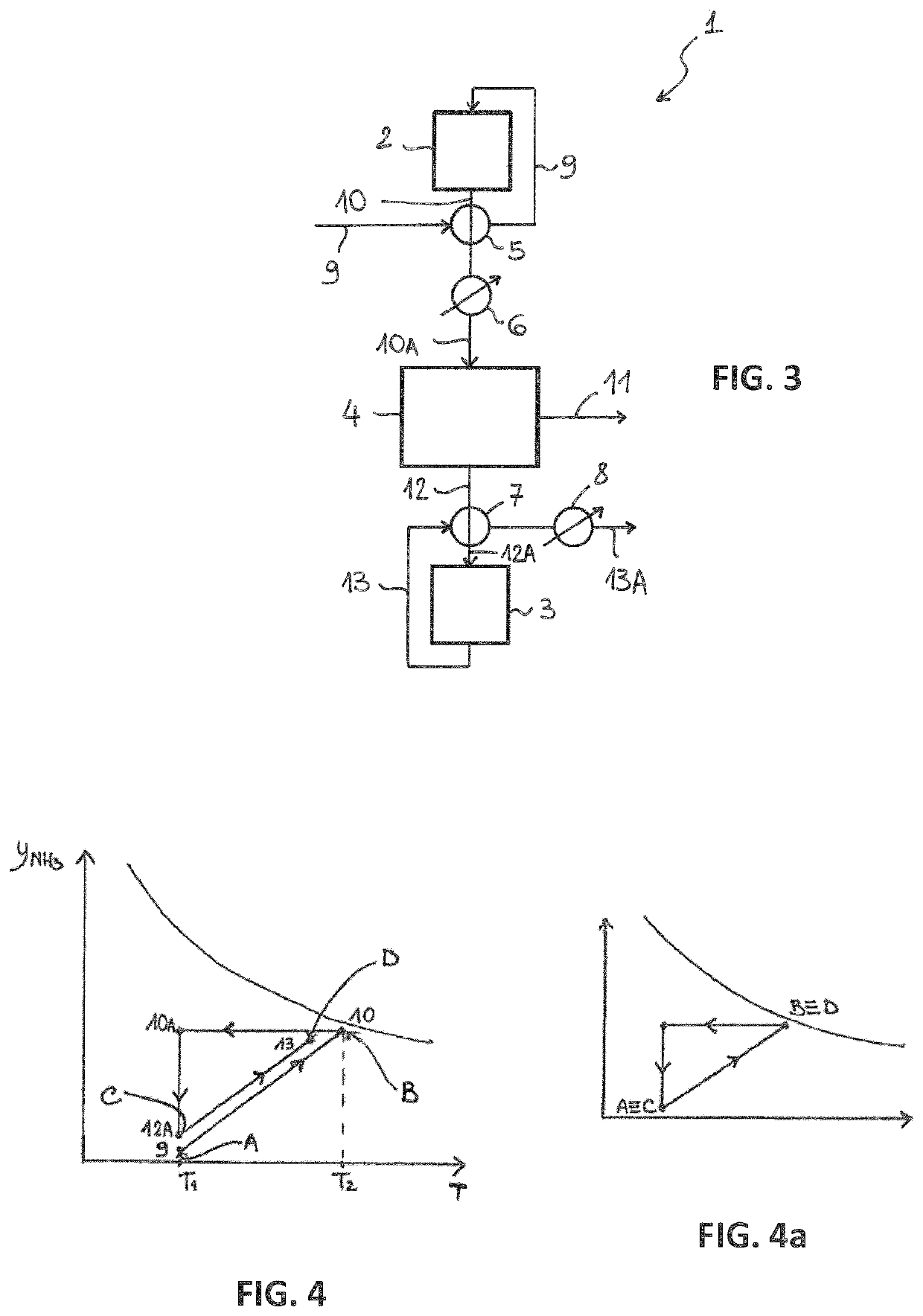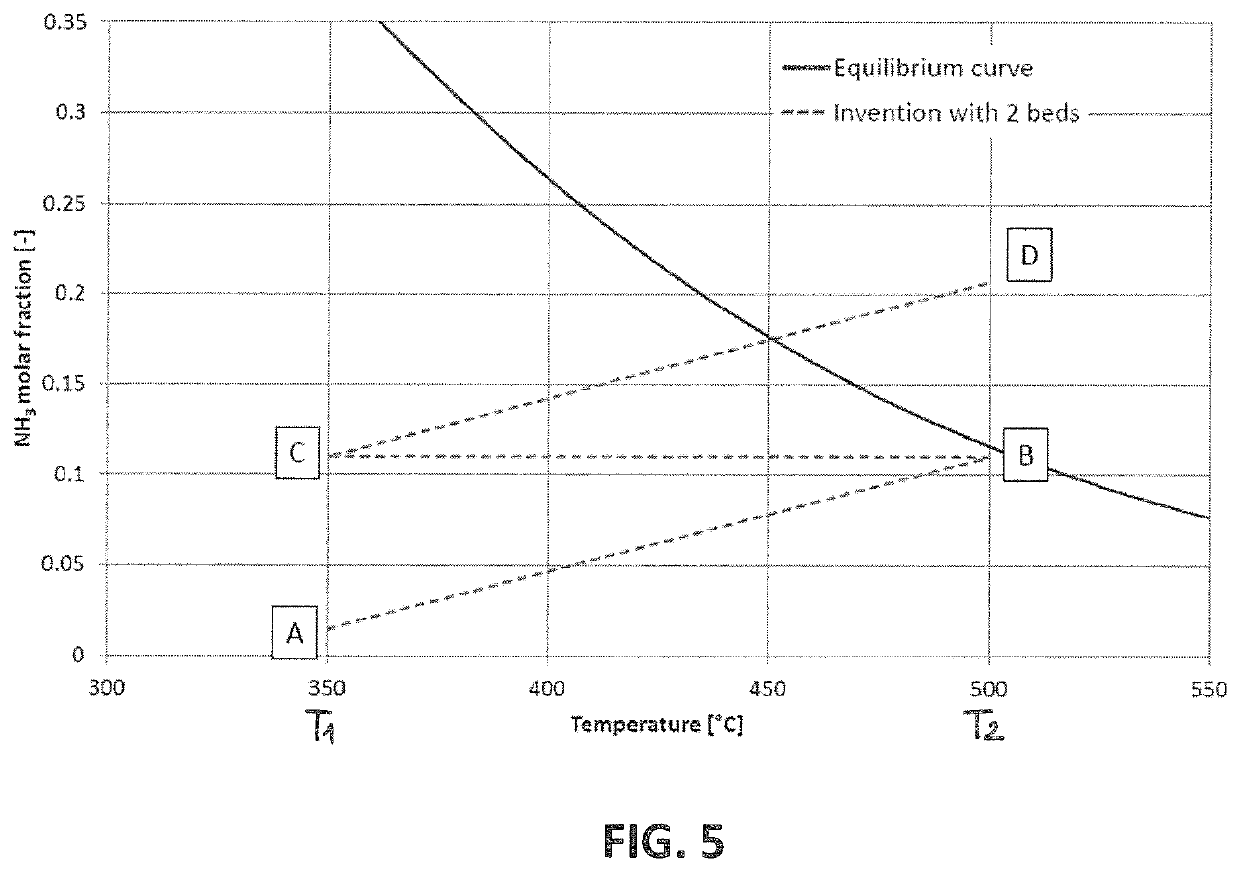Process for ammonia production
a technology for ammonia production and ammonia, applied in the field of ammonia production, can solve the problems of high cost of recompression and large size of all synthesis loop equipment, low ammonia concentration equilibrium, and inability to compensate for the higher cost of the greater number of beds
- Summary
- Abstract
- Description
- Claims
- Application Information
AI Technical Summary
Benefits of technology
Problems solved by technology
Method used
Image
Examples
Embodiment Construction
[0084]A prior art multi-bed reactor 100 is shown in FIG. 1. Said reactor 100 comprises three adiabatic catalytic beds 101, 102, 103 arranged in series, a first inter-bed heat exchanger 104 and a second inter-bed heat exchanger 105.
[0085]The operation of the reactor 100 is illustrated below.
[0086]A fresh make-up gas 106 passes through the second heat exchanger 105, wherein it is preheated by the effluent of the second bed 102, and subsequently through the first heat exchanger 104, wherein it is preheated by the effluent of the first bed 101. The so pre-heated make-up gas 106 enters the first bed 102, where it partially reacts to provide a first ammonia-containing stream 107. Said stream 107 is cooled inside the first heat exchanger 104 and the cooled effluent enters the second bed 102, where it further reacts to provide a second ammonia-containing stream 108. Similarly, said stream 108 is cooled in the second heat exchanger 105 before entering the third bed 103, which provides an amm...
PUM
| Property | Measurement | Unit |
|---|---|---|
| temperature | aaaaa | aaaaa |
| volume | aaaaa | aaaaa |
| adsorption | aaaaa | aaaaa |
Abstract
Description
Claims
Application Information
 Login to View More
Login to View More - R&D
- Intellectual Property
- Life Sciences
- Materials
- Tech Scout
- Unparalleled Data Quality
- Higher Quality Content
- 60% Fewer Hallucinations
Browse by: Latest US Patents, China's latest patents, Technical Efficacy Thesaurus, Application Domain, Technology Topic, Popular Technical Reports.
© 2025 PatSnap. All rights reserved.Legal|Privacy policy|Modern Slavery Act Transparency Statement|Sitemap|About US| Contact US: help@patsnap.com



